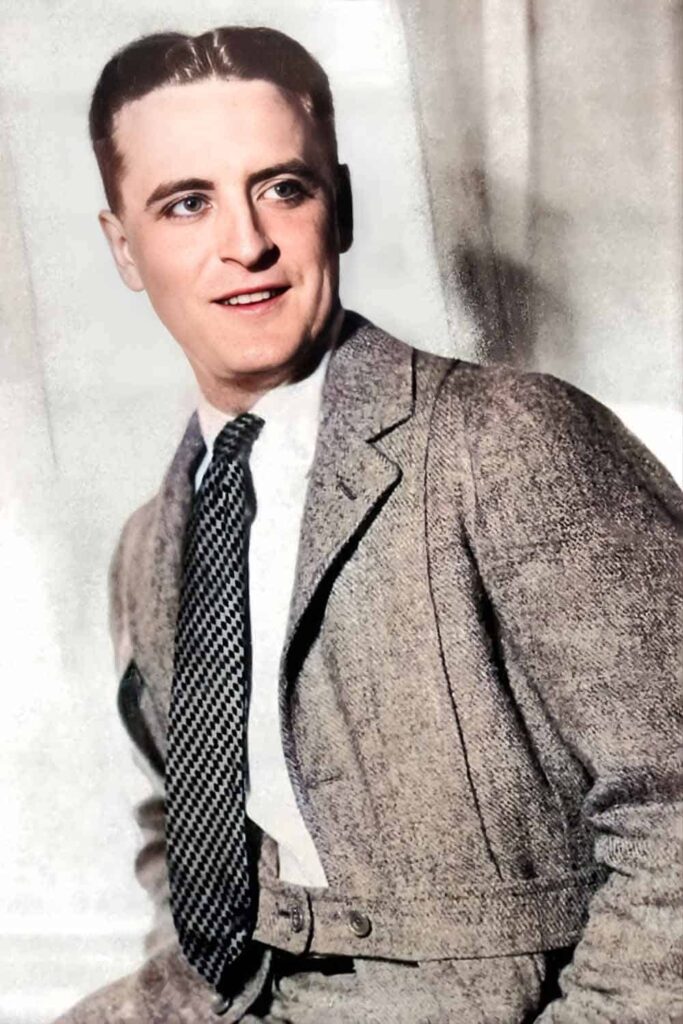
F. Scott Fitzgerald
F. Scott Fitzgerald’s Books on PageVio
Novels
This Side of Paradise (1920)
The Beautiful and Damned (1922)
The Great Gatsby (1925)
Tender Is the Night (1934)
Short Story Collection
Flappers and Philosophers (1920)
Tales of the Jazz Age (1922)
All the Sad Young (1926)
Taps at Reveille (1935)
The Pat Hobby Stories (1962, posthumous)
Play
The Vegetable; or, From President to Postman (1923)
Short Stories
Tarquin Of Cheapside (1917)
Porcelain And Pink (1920)
Head and Shoulders (1920)
Benediction (1920)
Dalyrimple Goes Wrong (1920)
Mr. Icky (1920)
The Camel’s Back (1920)
Bernice Bobs Her Hair (1920)
The Ice Palace (1920)
The Offshore Pirate (1920)
The Cut-Glass Bowl (1920)
The Four Fists (1920)
May Day (1920)
The Jelly-bean (1920)
The Lees Of Happiness (1920)
Jemina, the Mountain Girl (1921)
O Russet Witch! (1921)
The Curious Case Of Benjamin Button (1922)
The Diamond As Big As The Ritz (1922)
Winter Dreams (1922)
Dice, Brassknuckles & Guitar (1923)
Hot and Cold Blood (1923)
Gretchen’s Forty Winks (1924)
Absolution (1924)
The Sensible Thing (1924)
The Baby Party (1925)
The Pusher-in-the-Face (1925)
Love In The Night (1925)
The Adjuster (1926)
The Rich Boy (1926)
Presumption (1926)
Rags Martin-jones And The Pr-nce Of W-les (1926)
Jacob’s Ladder (1927)
A Short Trip Home (1927)
The Bowl (1928)
Magnetism (1928)
The Scandal Detectives (1928)
A Night At The Fair (1928)
The Freshest Boy (1928)
He Thinks He’s Wonderful (1928)
The Captured Shadow (1928)
Outside The Cabinet-maker’s (1928)
The Perfect Life (1929)
The Last Of The Belles (1929)
Forging Ahead (1929)
Basil And Cleopatra (1929)
The Rough Crossing (1929)
Majesty (1929)
At Your Age (1929)
The Swimmers (1929)
Two Wrongs (1930)
First Blood (1930)
A Nice Quiet Place (1930)
The Bridal Party (1930)
A Woman With A Past (1930)
One Trip Abroad (1930)
A Snobbish Story (1930)
The Hotel Child (1931)
Babylon Revisited (1931)
A New Leaf (1931)
Emotional Bankruptcy (1931)
Between Three and Four (1931)
A Freeze-out (1931)
Six Of One (1932)
Flight and Pursuit (1932)
Family In The Wind (1932)
What A Handsome Pair! (1932)
Crazy Sunday (1932)
One Interne (1932)
On Schedule (1933)
More Than Just A House (1933)
The Fiend (1935)
The Night At Chancellorsville (1935)
Shaggy’s Morning (1935)
Too Cute for Words (1936)
Three Acts of Music (1936)
The Ants at Princeton (1936)
Afternoon Of An Author (1936)
I Didn’t Get Over (1936)
An Alcoholic Case (1937)
The Guest in Room Nineteen (1937)
The Long Way Out (1937)
Financing Finnegan (1938)
Design In Plaster (1939)
The Lost Decade (1939)
Strange Sanctuary (1939)
Three Hours Between Planes (1941, posthumous)
News Of Paris – Fifteen Years Ago (1947, posthumous)
That Kind of Party (1951, posthumous)
F. Scott Fitzgerald Biography
F Scott Fitzgerald is an American author who is best known for his 1925 novel The Great Gatsby. Born in 1896, Fitzgerald was a key figure in the Jazz Age, a time of increasing social, economic, and cultural change in the US. His stories offer an insight into the lives of the post-World War I generation and the period’s culture of luxury and excess.
Fitzgerald wrote several novels and collections of short stories during his lifetime, but the most famous is The Great Gatsby. It tells the story of Jay Gatsby, a wealthy and mysterious man who rises in the world by throwing lavish parties and courting a woman from an upper-class family. The novel is set in the fictional town of West Egg, Long Island, and is imbued with Fitzgerald’s love of the Jazz Age and its decadent style.
Zelda Fitzgerald
Fitzgerald was married to Zelda Sayre, who was an important influence on his writing. The couple was highly social, regularly partying with their friends and exchanging ideas on life and art. Zelda was a writer herself, and her stories have been published posthumously.
Short Stories
Fitzgerald’s short stories are some of his most well-known works. From “The Diamond as Big as the Ritz” and “The Curious Case of Benjamin Button” to “Winter Dreams” and “The Offshore Pirate,” these stories offer an insight into the Jazz Age and the opulence of the era. His writing style is often compared to that of Ernest Hemingway, whom he was very close to, and his stories contain elements of tragedy.

